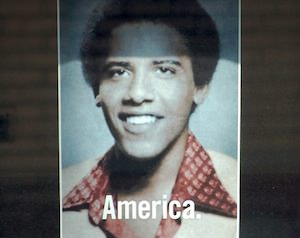The Resilient Minority Wage Gap
At the March on Washington where Martin Luther King Jr. gave his famous "I Have a Dream Speech" almost 50 years ago, black leaders called for "decent housing, adequate and integrated education, a federal jobs program for full employment, and a national minimum wage of more than $13 an hour in today’s dollars." Greg Kaufmann at The Nation tells us how far we've failed to come.
At the March on Washington where Martin Luther King Jr. gave his famous “I Have a Dream Speech” almost 50 years ago, black leaders called for “decent housing, adequate and integrated education, a federal jobs program for full employment, and a national minimum wage of more than $13 an hour in today’s dollars.” Greg Kaufmann at The Nation tells us how far we’ve failed to come.
“There are still ghettos of poverty that lack decent housing—where poor minority children don’t have the same access to resource-rich, middle-class communities as poor white children do,” Kaufmann writes. “Nearly half of poor African-American children live in neighborhoods with concentrated poverty, defined as areas where 30 percent of the census tract population lives below the federal poverty threshold (on less than $18,000 for a family of three). In contrast, only 12 percent of poor white children live in neighborhoods with concentrated poverty. (Thirty-nine percent of poor American Indian children live in areas of concentrated poverty, as do 35 percent of poor Hispanic children and 21 percent of poor Asian and Pacific Islander children.)”
Public schools are essentially separate and unequal. “Seventy-four percent of African-Americans still attend majority nonwhite schools, compared to just over 76 percent in the late 1960s,” Kaufmann writes. “That number had dropped down to 63 percent by the early 1980s, but [Economic Policy Institute report author Algernon] Austin suggests that progress reversed due to a “lack of commitment by the federal government and multiple decisions by the Supreme Court.” The share of black children in schools that are 90 to 100 percent nonwhite has also stagnated at around 38 percent since the early 2000s.”
These figures come from the Economic Policy Institute’s new report called “The Unfinished March — An Overview.” In that report, Austin, director of the EPI’s Program on Race, Ethnicity and the Economy, remarks further on the opportunity effects of inequality in schools.
“Now as a half century ago—segregated schools are unequal schools,” Austin writes. Kaufmann reports that a “10 percent increase in a school’s nonwhite students is associated with a $75 decrease in per student spending” Furthermore, according to Austin, “the average school with 90 percent or more nonwhite students has $443,000 less to spend on students during the school year.”
Kaufmann continues: “With this kind of stark difference in educational opportunities and resources, it’s hardly a surprise that—absent a full employment program that the March speakers called for—we have seen the black unemployment rate remain two to two and a half times higher than the white unemployment rate from 1963 to 2012.”
Jobless numbers were predictably worse during the recession. “When the economy was booming in 2000, and the white unemployment rate was 3.1 percent, the black unemployment rate was still a recession-like 7.6 percent. In the aftermath of the recent Great Recession, when white unemployment peaked at 8 percent, black unemployment stood at a Depression-like 15.9 percent. (The average national unemployment rate from 1929 to 1939 was 13.1 percent.)”
All of this comes during an era in which many insist that Americans have beaten racism embodied in and perpetuated by society’s institutions by electing a black president.
— Posted by Alexander Reed Kelly.
Your support matters…Independent journalism is under threat and overshadowed by heavily funded mainstream media.
You can help level the playing field. Become a member.
Your tax-deductible contribution keeps us digging beneath the headlines to give you thought-provoking, investigative reporting and analysis that unearths what's really happening- without compromise.
Give today to support our courageous, independent journalists.






You need to be a supporter to comment.
There are currently no responses to this article.
Be the first to respond.